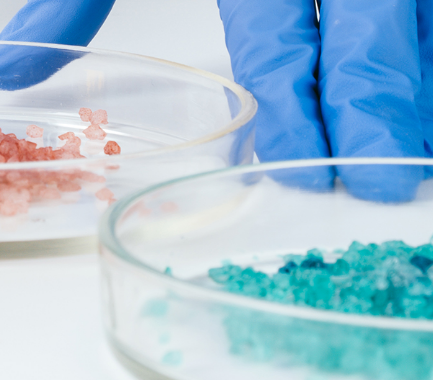Your contact
PENPET-Team - Hamburg

Jan Prager
Sales
Tel. +49 (0) 40 - 675 7 99 10
sales@penpet.de
Get in touch with us.
Polyethylene Glycol (PEG)
Polyethylene glycol (PEG) is a polymer that, depending on the molecular size, is suitable for various medical, pharmaceutical, technical and cosmetic applications. The compound is an important raw material for the chemical industry. Formally, it represents the result of the polymerization of monoethylene glycol. In practice, polyethylene glycol is mainly produced from ethylene oxide and water by means of anionic polymerization. However, by using ethylene glycol as the starting material, a more uniform chain length of the reaction products can be achieved.
The polymerization of ethylene glycol and ethylene oxide creates molecules of different sizes, which have different properties. Therefore, polyethylene glycol is used in numerous industries and fields of application. The compound is used in chemistry, biology, medicine, pharmacy and the cosmetics industry, among others.
At PENPET you can easily and reliably order the required amount of polyethylene glycol. The different types of polyethylene glycol are named according to their molecular weight. The types PEG 300, PEG 400, PEG 600, PEG 4000, PEG 6000 and PEG 8000 are available. We look forward to receiving your inquiry for an individual offer. Depending on the type, it is delivered as a liquid or solid in the usual packaging types and sizes.
CAS no. 25322-68-3
EINECS no. 500-038-2
Molecular formula: C2nH4n+2On+1
Synonyms: Polyethylene Glycol, Polyoxyethylene, Macrogol, PEG
Areas of application: Numerous applications in biology, pharmacy, medicine, chemistry and various branches of industry (depending on the type of polyethylene glycol)
More Information
Polyethylene Glycol (PEG) is the polymer of ethylene glycol as well as ethylene oxide. The term includes molecules of different chain lengths. These consist of repeating ethylene glycol units whose hydroxy groups have been dissolved to form linking ether groups. The molecular mass of an ethylene glycol segment is approx. 44 g/mol. Correspondingly, the length of the chaining of the respective polymerization products can be deduced from the molecular weight of the polyethylene glycol used. Types such as PEG 200 or PEG 400 therefore contain significantly shorter and smaller molecules than PEG 6000 or PEG 8000.
At the ends of its linear structure, polyethylene glycol has two unreacted hydroxy groups. Their influence on the reactivity of the substance decreases with increasing molecular size and can be neglected in the case of long-chain polyethylene glycols, which is why they are also referred to as polyethylene oxide.
Polyethylene glycol (PEG) have different properties depending on their molecular weight. PEG 200 and PEG 400 are non-volatile and colorless liquids, while PEG 600 has a paste-like consistency. Polyethylene glycol with a molecular mass of more than 3000 g/mol is present as a solid in the form of flakes or powder. Accordingly, the melting point and the hardness of the compound continue to increase with increasing molecular weight. Polyethylene glycols of different states of aggregation can be mixed to form ointments and pastes.
The hygroscopicity and solubility of polyethylene glycol in water decreases with increasing molecular weight. Liquid types of the compound are completely miscible with water, while solid types of polyethylene glycol differ in their degree of solubility. The compound has a characteristic smell, the note of which also depends on the size of the molecules.
Under normal conditions, polyethylene glycol (PEG) is stable and largely inert. Therefore, the compound is hardly degradable in the environment. The substance is combustible. At temperatures above 50 °C, polyethylene glycol gradually tends to oxidize. When the compound decomposes, various organic compounds are formed, including noxious and irritating gases. Liquid polyethylene glycol vapors may form explosive mixtures with ambient air.
Polyethylene glycol (PEG) is considered biologically inactive and generally not very toxic, with smaller molecules exhibiting higher toxicity than larger ones. The compound does not irritate the mucous membranes, the skin or the eyes. However, allergic reactions are possible and are increasingly reported.
In tolerability studies on animals, only the intake of very high and chronically administered amounts of polyethylene glycol led to damage to the health of the organs and to a reduced life span. The toxicity of polyethylene glycol decreases rapidly as the molecular mass of the polymers increases.
